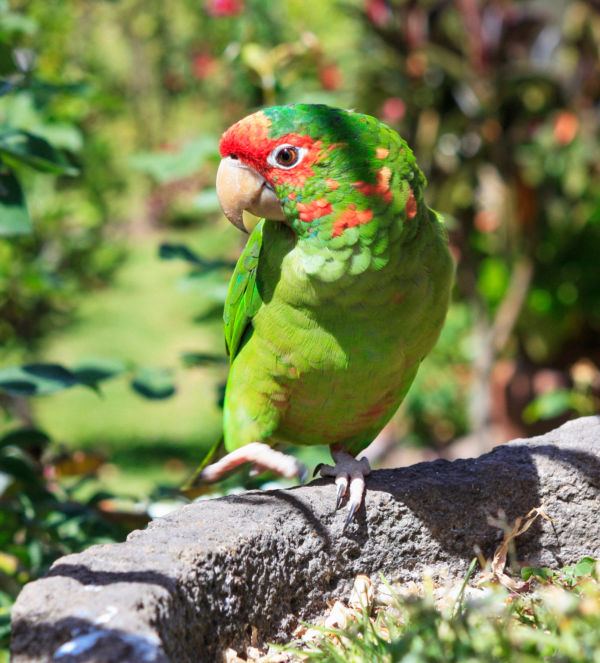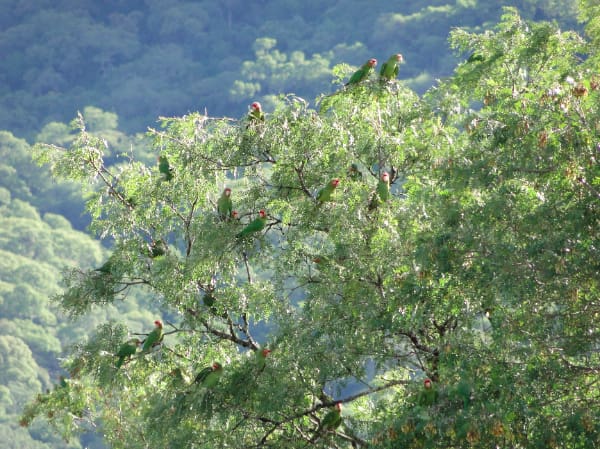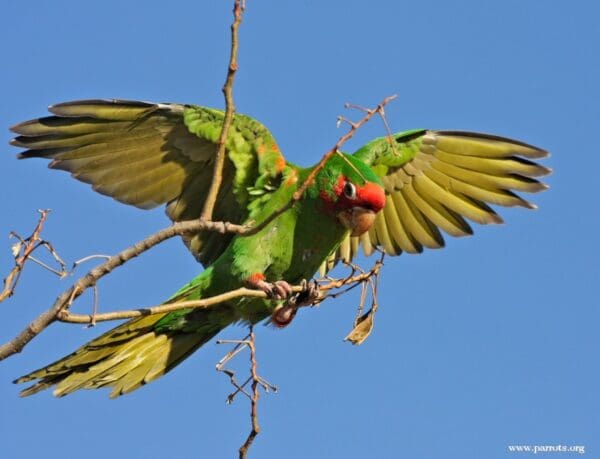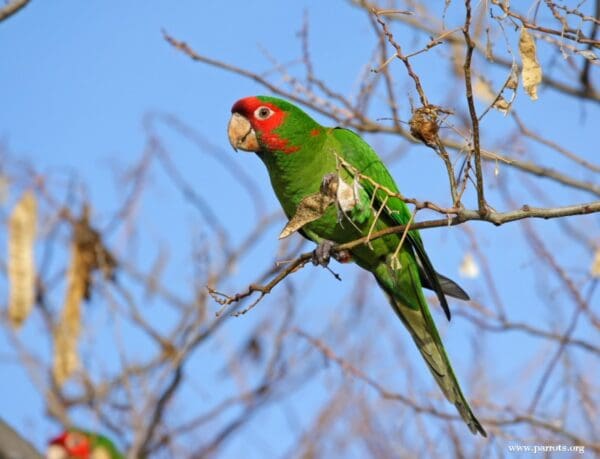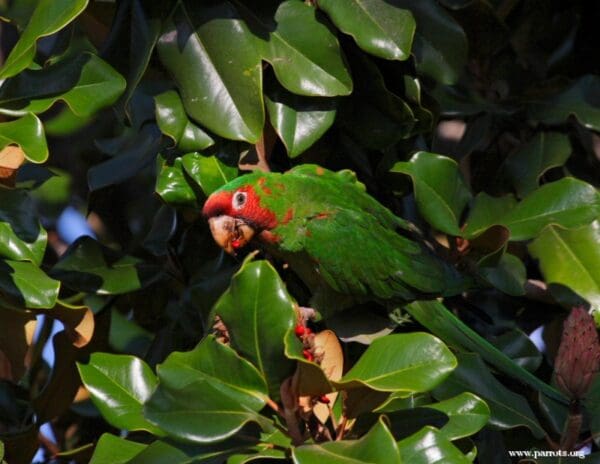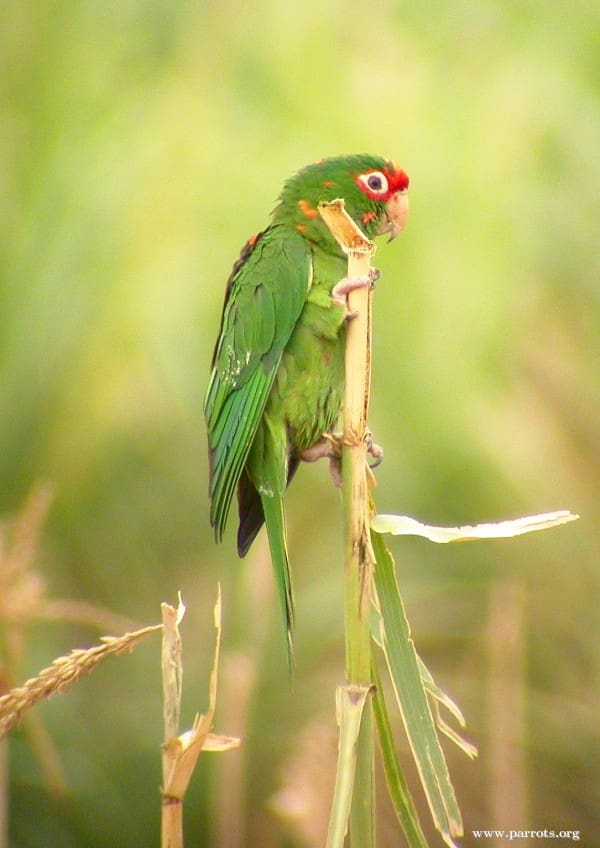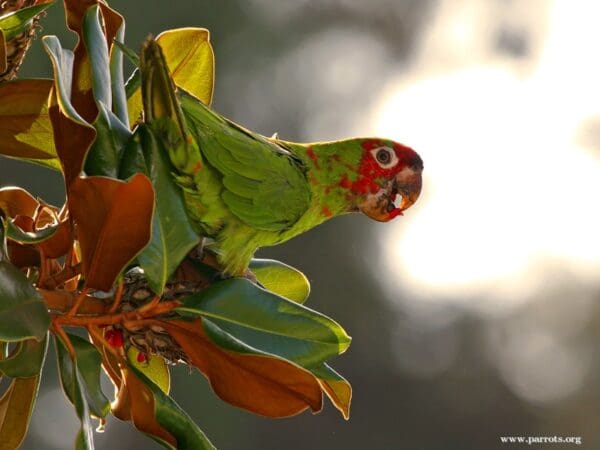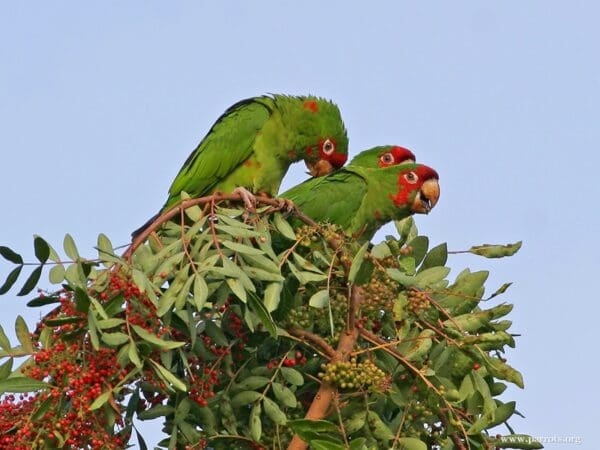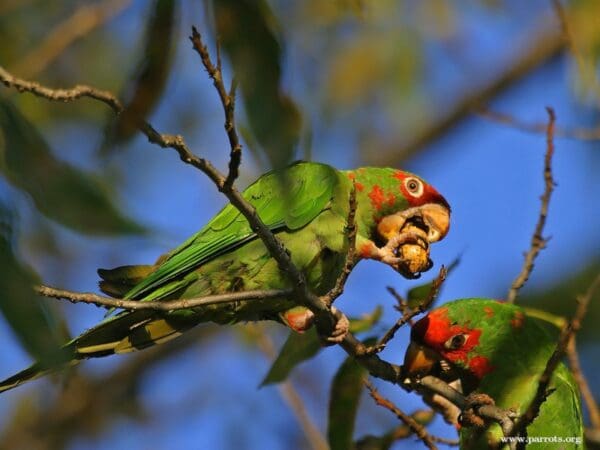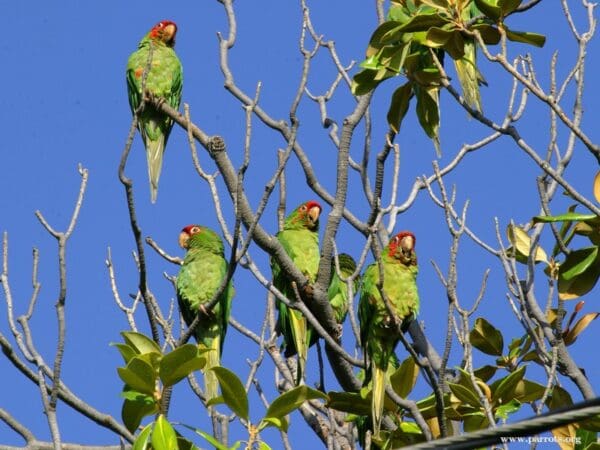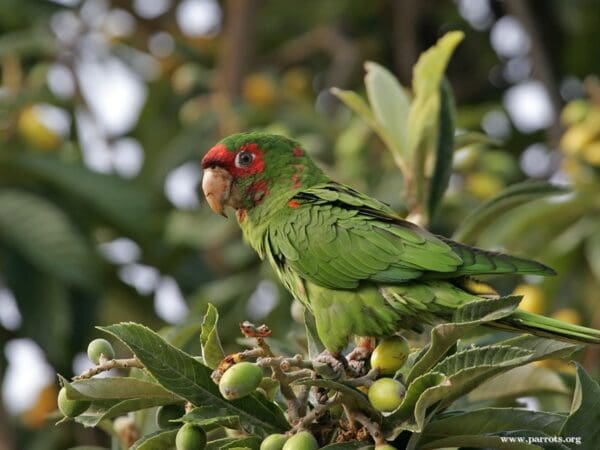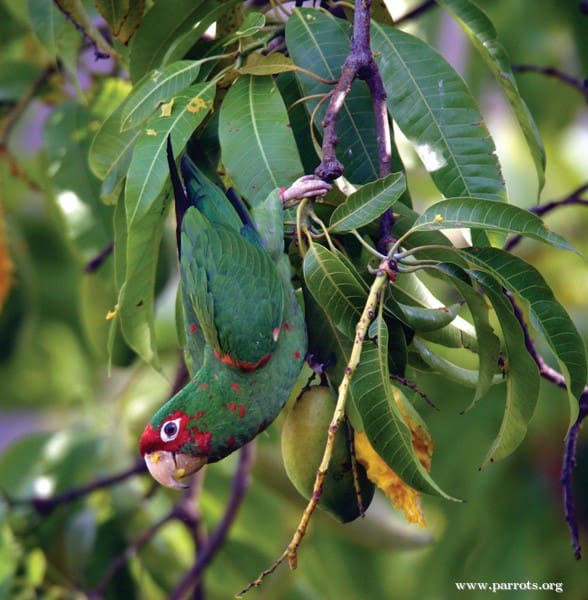Mitred Conure
Also known as:
Mitred Parakeet
Also known as:
Mitred Parakeet
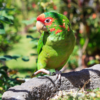
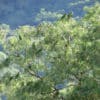
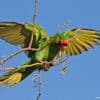
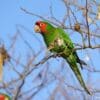

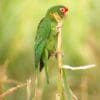
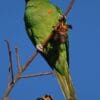

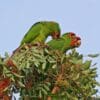
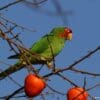
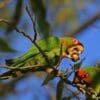
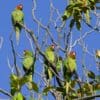
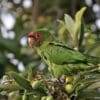
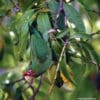
DID YOU KNOW?
Since 1981, when the Mitred Conure was listed on CITES Appendix II, 158,149 individuals have been traded on the international market.

Psittacara

mitratus
Size:
38 cm (14.8 in)
Weight:
200-240 g (7-8.4 oz)
Subspecies including nominate:
two: P.m. mitratus, P.m. alticola
Colour Adult:
P.m. mitratus: Both adults green in colour, with yellow on the underparts; brown/red forehead turning to brighter red on forecrown, lores, cheeks and sides of neck; ear coverts occasionally red; red feathers scattered variably on hindneck, mantle, throat, thighs and bend of wing; olive/green underwing coverts. Beak horn-coloured. Eye ring bare and buff/white. Eye dull yellow with grey inner ring.
P.m. alticola: Both adults darker green than mitrata, particularly upperparts; red confined to thin frontal band and few scattered feathers on lores and sides of head; red on thighs absent.
Colour Juvenile:
P.m. mitratus: Red on cheeks and sides of neck minimal or absent. Eye brown.
P.m. alticola: Undescribed.
Call:
Calls deep and harsh, as well as loud and abrupt notes. Some sounds are said to resemble a toy trumpet.
More Information:
Content Sources:
CITES
BirdLife International
Cornell Lab of Ornithology/Birds of the World
Parrots: A Guide to Parrots of the World, Juniper and Parr, 1998
Parrots of the World, Forshaw and Cooper, 1977. 2010 edition
Parrots of the World, Forshaw, 2006.
Parrots in Aviculture, Low, 1992.
Psittacine Aviculture, Schubot, Clubb and Clubb, 1992.
Captive Status:
Common in US, less so elsewhere.
Longevity:
30 yrs
Housing:
Aviary or suspended enclosure, minimum length 2 m (6.5 ft).
Diet:
Fruit such as: apple, pear, orange, cactus fruits, banana, pomegranate, forming about 30 percent of the diet; vegetables such as: carrot, celery, green beans and peas in the pod; green leaves such as: Swiss chard, lettuce, sowthistle, chickweed, dandelion; spray millet; small seed mix such as: millet, canary, and smaller amounts of oats, buckwheat, safflower and limited sunflower; sunflower soaked or sprouted; cooked beans and pulses, boiled maize and complete pellet.
Enrichment:
Avid bathers so provide overhead misters or shallow water bowls; also provide bird-safe chew toys such as: fir, willow, elder and pine branches; wood block toys, vegetable-tanned leather toys; puzzle and foraging toys, ladders, swings.
Nest Box Size:
Vertical box 12″ x 12″ x 18″ (30.5 cm x 30.5 cm x 46 cm).
Clutch Size:
3
Fledging Age:
9 weeks
Hatch Weight:
—
Peak Weight:
—
Weaning Weight:
—
World Population:
Unknown; described as common but patchily distributed. Stable.
IUCN Red List Status:
Least Concern
CITES Listing:
Appendix II
Threat Summary:
Not globally threatened. Generally common and locally abundant, despite strong pressure on cloud forest habitat in transitional zone between densely populated rainshadow valleys and humid Andean slopes in Peru. Race alticola may be rare. Has been traded internationally in large numbers.
Range:
P.m. mitratus: Found in subtropical zone of E Andes in C Peru, south from Huanuco, through west-central Bolivia to NW Argentina, south to La Rioja and W Cordoba. Introduced to California, Florida and Hawaii, US.
P.m. alticola: Temperate zone in Cuzuco region, C Peru.
Habitat:
Found 1000-3500 m (3280-11,480 ft). Alticola possibly seen up to 4000 m (13,120 ft). Seen generally in dry subtropical zones but also recorded from temperate areas such as montane deciduous forest, cloud-forest, cultivated fields, grassy hills with tall herbaceous plants, brush and scrub areas with scattered trees and legume-rich savanna.
Wild Diet:
Diet includes ripening berries and maize Zea mays. The naturalized population in California takes fruits of Platanus species and Myoporus laetum, and flowers of Eucalyptus.
Ecology and Behaviour:
Seen in pairs or threes but may congregate up to 100 individuals outside of breeding season. May take cultivated crops, but generally feeds in natural forest areas. This species, as well as others, migrates to Lerma Valley in NW Argentina.
Clutch and Egg Size:
3 broad-oval eggs, 32.0 x 26.5 mm (1.2 x 1 in).
Breeding Season:
December in Argentina. Nest is in tree or cliff cavity.
